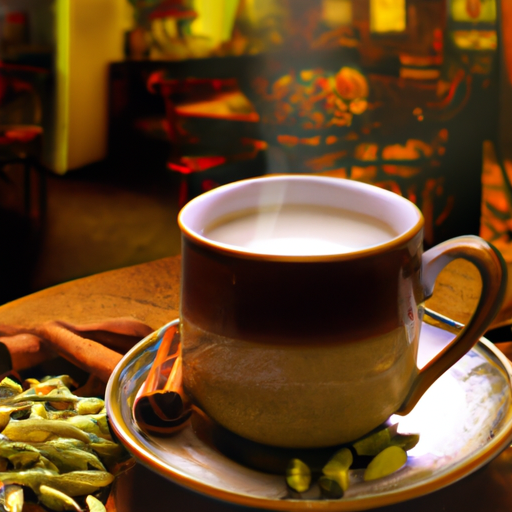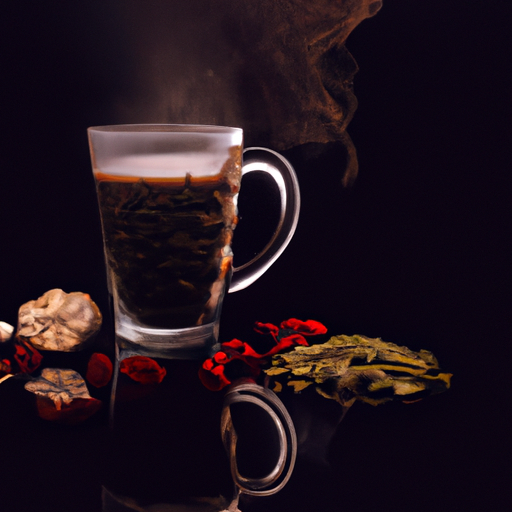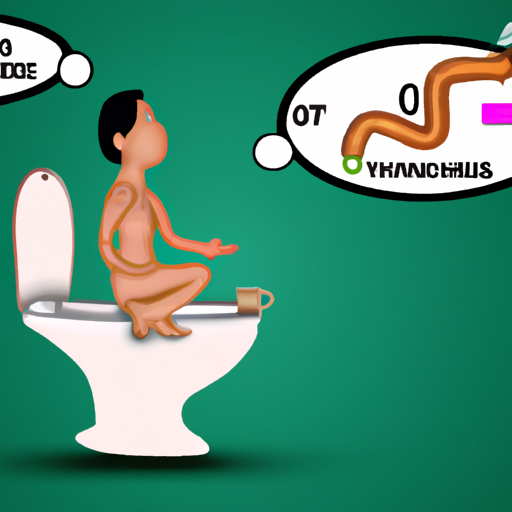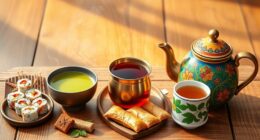For me, there’s an undeniable charm in sipping on a steaming cup of chai tea—it just fills me with a sense of warmth and comfort. Whenever I’m in the mood for my chai tea fix, Starbucks tends to be my preferred choice.
But did you know that you can make your own delicious chai tea at home? It’s true! And the best part is that it’s super easy to do.
In this article, I’m going to walk you through the step-by-step process of making your very own homemade chai tea – just like they do at Starbucks.
We’ll start by talking a little bit about what exactly chai tea is and why it’s so darn tasty. Then we’ll move on to gathering our ingredients and measuring everything out so that we’re ready to brew.
From there, I’ll show you how to add in all those delicious spices and sweeteners before straining the tea and getting it ready for serving. Plus, I’ll even give you some tips and variations along the way so that you can customize your chai experience however you like!
So let’s get started – your perfect cup of homemade Starbucks-style chai tea awaits!
Key Takeaways
- Chai tea has a centuries-old cultural history and numerous health benefits.
- Homemade chai tea requires tea leaves, spices, milk, and sweetener.
- Brewing chai tea involves measuring ingredients accurately, boiling water, and frothing milk.
- To enhance chai tea flavor, different spices, sweeteners, milks, and straining methods can be used.
Understanding Chai Tea
You’re probably familiar with the warm, spicy aroma of chai tea, a drink that transports you to bustling markets in India or cozy cafes on a chilly autumn day. But did you know that chai tea has been around for centuries and is steeped in rich cultural history?
Originating in India, chai tea was traditionally brewed with black tea, spices like cinnamon and cardamom, and milk. It was believed to have medicinal properties and was often used as an herbal remedy.
Today, chai tea has become a popular beverage all over the world due to its delicious taste and numerous health benefits. It can boost digestion, aid in weight loss, reduce inflammation, and promote heart health. There are also various ways to enjoy this flavorful drink! Some popular recipes include masala chai from India made with ginger and black pepper or Thai iced tea infused with condensed milk.
Now that you understand the history and benefits of chai tea, let’s move onto making your own delicious cup at home! The first step is gathering your ingredients, which include black tea bags or loose leaf black tea, spices like cinnamon sticks or ground cardamom, sweetener of choice (sugar or honey), and milk (dairy or non-dairy alternatives).
Gather Your Ingredients
So, when it comes to making a delicious cup of chai tea at home, there are four key ingredients you’ll need to gather:
-
Tea leaves: You can use either black tea or green tea as your base.
-
Spices: The spices typically used in chai include cinnamon, cardamom, ginger, cloves, and black pepper.
-
Milk: Milk is an essential component of chai; many people prefer whole milk for its richness and creaminess.
-
Sweetener: Finally, sweeteners such as honey or sugar can be added to taste.
Remember to add a double new line after each complete sentence for logical grouping. Also, use contractions to make the paragraph more informal and conversational.
Tea Leaves
First, grab a tea sachet of your choice and add it to a cup of hot water. When it comes to making chai tea at home, the type of tea you choose is crucial in achieving that authentic taste. There are several types of tea that can be used to make chai, such as black tea, green tea, or even white tea. Each type has its own unique flavor and aroma, so choosing the right one will depend on your personal preference.
Once you’ve chosen your preferred type of tea leaves, it’s time to brew them. Most teas require boiling water between 200-212°F (93-100°C) for optimal brewing. However, some teas may require different brewing times or temperatures depending on the strength and flavor profile you desire. Experiment with different brewing methods until you find the perfect combination for your taste buds.
Now that we’ve brewed our favorite chai tea leaves, let’s move on to adding some spices to give it that signature Starbucks flavor!
Spices
Now that you’ve brewed your favorite type of tea leaves, it’s time to elevate the flavor with a blend of aromatic spices that will transport you to India’s bustling streets.
Chai tea is known for its unique and delicious blend of spices, which include cinnamon, cardamom, ginger, cloves, and black pepper. Each spice not only adds depth to the flavor but also has various health benefits.
Cinnamon helps regulate blood sugar levels and has anti-inflammatory properties. Cardamom aids digestion and freshens breath. Ginger has anti-nausea and anti-inflammatory effects. Cloves have antimicrobial properties that can help fight off infections. Black pepper improves digestion and helps with nutrient absorption.
These spices are not only flavorful but also have culinary uses beyond chai tea, making them versatile additions to any spice rack or pantry.
As we move on to the next step in making chai tea at home, adding milk will help create a creamy texture while balancing out the bold flavors from the tea leaves and spices.
Milk
Adding milk to your homemade chai can elevate the flavor and provide a creamy texture. Whole milk is the most commonly used option, as it contains around 3.25% fat. However, there are many types of milk alternatives available that can be used to make chai tea, such as almond milk, soy milk, or coconut milk. These options offer unique flavors and textures that can add an interesting twist to your chai.
If you choose to use dairy-based whole milk for your chai tea latte, it’s important to froth it properly in order to achieve the perfect texture. A simple way is by using a handheld frother or a French press. Alternatively, you could lightly simmer the milk on the stove until hot and then whisk it vigorously until foamy before adding it to your brewed tea. By doing this step correctly, you’ll get a beautifully creamy foam layer on top of your homemade chai tea latte.
With that said, let’s move onto the next step – sweeteners!
Sweetener
If you’re looking for a way to enhance the flavor of your homemade chai, using a sweetener is an excellent option. There are different types of sweeteners you can use to make your chai taste better.
Here are four items you need to know about sweeteners:
-
White sugar – This is the most commonly used type of sweetener for chai tea. It dissolves easily and gives a good balance of sweetness.
-
Brown sugar – Using brown sugar in your chai tea can give it a richer and more complex flavor because it contains molasses.
-
Honey – Honey adds natural sweetness and also has some health benefits like soothing sore throats and boosting immunity.
-
Agave nectar – This sweetener has a low glycemic index, making it a healthier option than other types of sugars.
When it comes to best brands, there are many options available in the market such as Stevia, Truvia, Splenda, etc. However, choosing the right brand depends on personal preference and dietary restrictions.
Once you’ve chosen your preferred type of sweetener or brand, it’s time to measure out the appropriate amount before moving on to the next step where we’ll measure our ingredients for making Starbucks-like Chai Tea at home!
Measure Your Ingredients
To achieve the perfect balance of flavors, it’s crucial to measure your ingredients accurately when making chai tea Starbucks-style. Measuring accuracy is key to ensuring that you get just the right amount of each ingredient.
Too much or too little can throw off the delicate balance of spices and sweetness. Start by measuring out your black tea using a kitchen scale or teaspoon, depending on how strong you like your tea.
Next, measure out your spices – cinnamon, ginger, cardamom, cloves – using a teaspoon or spice measuring spoon set. Be sure to level off each spoonful for consistency in flavor. If you prefer a stronger spice flavor, adjust accordingly by adding an extra pinch here and there.
Lastly, don’t forget about sweetening options such as honey or sugar. Measure these out based on personal preference but keep in mind that too much sweetness can overpower the other flavors in the chai tea mix.
Once all ingredients are measured out correctly and ready to go, it’s time to brew the tea and bring all those delicious flavors together. By measuring accurately and paying attention to tea strength and spice ratios, you’ll be able to create a chai tea that rivals any Starbucks drink.
Now let’s move onto brewing the perfect cup of chai!
Brew the Tea
Now that I’ve measured my ingredients, it’s time to brew the tea.
The first step is to boil water in a kettle or stove. Once the water has reached boiling point, I’ll add the tea bags and let them steep for 5-7 minutes, depending on how strong I want my chai tea to be.
Boiling Water
First things first, let’s get that water boiling for the perfect cup of chai tea Starbucks style! Using boiling water is the first and most crucial step in making a good cup of tea. However, it’s essential to take safety precautions when dealing with hot water.
Here are some benefits and drawbacks of using boiling water:
-
Benefits:
-
Boiling water kills any bacteria or germs present in the water.
-
Hot water helps to release the flavors and aromas of the tea leaves.
-
Boiling water can help to remove any impurities present in the tea.
-
Drawbacks:
-
Boiling water can scorch delicate teas, resulting in a bitter taste.
-
Overheating the teapot or mug can cause cracks or breakage.
It’s important to note that not all teas require boiling water. For Chai Tea, however, we need hot boiling liquid to steep our teabags. Now that we know how important it is to use hot boiling liquid, let’s move on to steeping time.
Steeping Time
Steeping time is crucial for achieving the perfect cup of tea that will tantalize your taste buds. For chai tea, steeping time can vary depending on the type of tea leaves and personal preference. Generally, the recommended steeping time for black tea used in chai is 3-5 minutes.
To adjust flavor, you can try increasing or decreasing steeping time by 30 seconds increments until you find your desired taste. Another alternative method is to use a higher quantity of tea leaves and shorter steeping time or vice versa. However, be cautious not to oversteep as it can result in a bitter taste.
Now that we have mastered the art of steeping, let’s move on to adding spices and sweetener to create the ultimate homemade chai latte experience.
Add Spices and Sweetener
Enhance the flavor of your chai tea by sprinkling in a pinch of cinnamon and ginger, and don’t forget to add a dollop of honey for that perfect touch of sweetness. The spice combinations you use can really make or break your homemade chai tea. Cinnamon is a classic addition, but feel free to experiment with other spices like cardamom or nutmeg to find what works best for you.
If you’re looking for alternative sweeteners, try using maple syrup or agave nectar instead of honey. These options are great for vegans or those who want to cut down on sugar. Keep in mind that different sweeteners will affect the overall taste of your chai tea, so be sure to adjust accordingly.
Now that you’ve added your spices and sweetener, it’s time to move on to the next step: adding milk. By adding milk, you’ll get that creamy consistency and richness that we all know and love from Starbucks’ chai tea lattes. So grab your favorite type of milk (dairy or non-dairy), heat it up separately, then mix it into your spiced tea mixture for the perfect cup of homemade chai goodness.
Add Milk
Now that your spiced tea mixture is infused with flavor, it’s time to add a creamy and indulgent element by pouring in your choice of milk. Adding milk to chai tea creates a smooth, velvety texture that complements the bold spices perfectly.
There are several types of milk you can use for chai tea, including whole milk, almond milk, soy milk, or oat milk. Whole milk is the traditional choice for making chai tea because its rich and fatty consistency balances out the strong spices. However, if you want a healthier option or have dietary restrictions, there are plenty of alternative milks available.
Almond milk has a slightly nutty flavor that pairs well with the warm cinnamon and cardamom notes in chai tea. Soy milk is another popular dairy-free option that adds creaminess without altering the taste too much. Oat milk is also becoming more popular as an eco-friendly and sustainable alternative.
Once you’ve added your preferred type of milk to the spiced tea mixture, give it a stir and let it simmer for another minute or two until everything is blended together nicely. Now that your homemade chai tea is complete with all its flavorful ingredients, it’s time to strain it through a fine-mesh sieve into your mug.
This will remove any remaining loose spices or leaves from the mixture and ensure a smooth drinking experience.
Strain the Tea
To take your homemade chai tea to the next level, strain it through a fine-mesh sieve into your mug. This ensures that every sip is silky smooth and free from any loose spices or leaves. There are various tea strainer alternatives available in the market if you don’t have a fine-mesh sieve at home. For instance, you could use a cheesecloth or coffee filter paper as well.
When using a fine-mesh sieve, place it over your cup and pour the brewed chai tea through it slowly. The mesh will catch all the larger particles, leaving behind only the liquid goodness of your homemade chai tea. Straining technique tips include not pushing too hard on the leaves or spices as this may cause them to break apart and leave residue in your cup.
Now that you’ve strained your hot chai tea, you can move on to frothing milk for an added layer of richness and texture (optional). Simply heat up some milk until it’s warm but not boiling, then use a handheld frother or whisk vigorously until foamy.
Pour this deliciously frothy milk over your perfectly brewed chai tea for an indulgent treat that’s sure to satisfy any craving!
Froth the Milk (Optional)
If you want to add an extra layer of richness and texture to your homemade chai tea, you can try frothing milk with a handheld frother or whisk until it’s foamy, giving you a deliciously indulgent treat.
Milk frothing techniques vary depending on the equipment used. For a quick and easy method, use a handheld milk frother by heating up milk in a saucepan over medium heat before pouring it into your mug of tea and using the frother to create foam on top.
If you’re looking for alternative milk options, there are plenty of choices available that can be used for frothing. Non-dairy milks such as soy, almond, or oat milk can all be used instead of traditional dairy milk. Some non-dairy milks may require more effort when it comes to frothing due to their lower fat content, but experimenting with different brands and types will help you find the perfect match for your homemade chai tea.
Once your milk is perfectly frothed, pour it over your strained chai tea mixture for added creaminess. Serve hot and enjoy this decadent beverage that’s sure to satisfy any craving!
Serve and Enjoy
Don’t forget to savor every sip of your homemade frothy chai tea, as the creamy texture and aromatic spices combine for a truly satisfying experience. As you prepare to serve your delicious concoction, consider presentation tips that can enhance your experience even further.
Use a clear glass mug or teacup to show off the beautiful layers of foamy milk and rich, amber-colored tea. Sprinkle some cinnamon or nutmeg on top for an added touch of flavor and eye-catching appeal.
When it comes to flavor combinations, there are endless possibilities for customizing your chai tea to suit your taste preferences. If you prefer a sweeter drink, add some honey or maple syrup before serving. For a spicy kick, try adding a pinch of cayenne pepper or ginger powder. You can also experiment with different types of milk such as almond, soy, or oat milk.
Now that you’ve mastered the art of making frothy chai tea at home and learned some presentation tips and flavor combinations to elevate your beverage game, let’s move on to tips and variations that’ll keep things interesting in the future.
Tips and Variations
Now that you know how to serve and enjoy your freshly brewed chai tea, let’s talk about some tips and variations to make it even more delicious. Personally, I love adding a dash of cinnamon or nutmeg to my chai for an extra kick of flavor. You could also try adding a bit of honey or agave syrup if you prefer your tea on the sweeter side.
Here are some more ideas to switch up your chai routine:
- Add a splash of almond milk or coconut milk for a creamier texture.
- Experiment with different types of tea leaves such as black tea, green tea, or rooibos.
- Try steeping your spices in hot water before adding the tea leaves for a more intense flavor.
- For an iced version, brew your chai as usual and then pour it over ice with a splash of milk.
When it comes to serving suggestions, I like to pair my chai with something sweet like a cookie or scone. It’s also great with savory snacks like crackers and cheese. If you’re feeling fancy, try serving it in pretty teacups with saucers for an elegant touch.
With these tips and variations in mind, you’ll be able to create your own unique twist on the classic Starbucks chai tea recipe. Play around with different flavors and find what works best for you!
Frequently Asked Questions
What is the best brand of chai tea to use for this recipe?
When it comes to finding the best chai tea brand for making homemade chai lattes, there are a few key factors to consider. Some of my favorite brands include Rishi Masala Chai, Tazo Organic Chai, and Numi Organic Tea Aged Earl Grey. Each of these blends offers unique tasting notes that make for a delicious and complex flavor profile.
Additionally, when it comes to choosing milk for your chai latte, both almond and coconut milk can work well depending on your personal preference. Almond milk has a nutty flavor that pairs well with the spices in chai, while coconut milk adds a creamy sweetness that can balance out any bitterness from the tea.
Ultimately, the best brand of chai tea and type of milk will depend on your individual taste preferences and desired level of sweetness or creaminess in your homemade Starbucks-style chai latte!
Can I use non-dairy milk alternatives such as almond milk or coconut milk?
Although traditional chai tea is made with dairy milk, you can use non-dairy milk alternatives such as almond or coconut milk to make a delicious and healthy alternative. There are several benefits to using non-dairy milk in your chai tea recipe. For example, almond milk contains fewer calories than dairy milk and is rich in vitamin E, which helps to protect the body from harmful free radicals.
Coconut milk is also an excellent choice for chai tea as it adds a creamy texture and tropical flavor to the drink. If you’re interested in making homemade non-dairy milk for your chai tea, there are many easy recipes available online that use ingredients like nuts or oats.
Overall, using non-dairy milks for your chai tea recipe can not only be a great way to accommodate dietary restrictions but also add unique flavors and health benefits to your beverage.
How long does the tea need to brew before adding the spices and sweetener?
When it comes to brewing chai tea, timing is crucial for achieving that perfect balance of flavors. To begin with, I recommend bringing water to a boil and steeping the tea leaves for about 5 minutes before adding any spices and sweeteners. This allows the tea to fully infuse with water and form a strong base.
Once you’ve added your preferred spices, like cinnamon, cardamom, ginger, or cloves, let it brew for an additional 3-4 minutes on low heat. During this time, make sure to stir occasionally to prevent any clumping of ingredients.
As for sweeteners, feel free to experiment with different variations like honey or agave syrup depending on your taste preferences. The key is to not overdo it as too much sweetness can overpower the delicate flavor notes of the tea and spices.
With these brewing techniques in mind, you can easily create your own unique flavor variations of chai tea at home!
What is the best way to froth the milk if I do not have a frother?
Did you know that 90% of Starbucks customers order their drinks with milk?
If you’re looking to froth milk for your homemade chai tea latte but don’t have a frother, there are alternative methods to achieve that creamy texture.
One option is to use a French press by heating up the milk and then pouring it into the press. Pump the plunger up and down until the milk becomes frothy.
Another method is to use a whisk or hand mixer by vigorously whisking or mixing the heated milk until it foams up.
Lastly, you can also try shaking your milk in a jar with a tight lid for about 30 seconds until it’s frothy.
With these alternative frothing methods, you’ll be able to enjoy your homemade chai tea latte just like at Starbucks without needing any fancy equipment!
Can I make a larger batch of chai tea and store it in the refrigerator for later use?
Yes, you can make a larger batch of chai tea and store it in the refrigerator for later use. This process is called ‘batch brewing’ and can be done by increasing the amount of ingredients used in the recipe.
Once the chai has been brewed, strain out any loose leaves or spices and let it cool before transferring it to an airtight container for storage in the refrigerator. The chai concentrate should last for up to a week when stored properly.
When ready to serve, simply mix equal parts concentrate with milk (or your preferred dairy-free alternative) and heat on the stove or in the microwave until the desired temperature is reached. Enjoy!
Conclusion
In conclusion, making chai tea Starbucks-style isn’t as complicated as it may seem. It requires a few simple steps and some essential ingredients to create a delicious cup of warm, spiced goodness.
As I sipped on my homemade chai tea latte, I couldn’t help but feel like I was transported to a cozy café in India. The fragrant aroma of the spices mixed with the creamy milk and sweet honey made for a delightful sensory experience. With each sip, I felt more relaxed and comforted, almost like wrapping myself in a warm blanket on a chilly day.
So don’t be intimidated by the thought of making your own chai tea at home. Give it a try and let yourself indulge in this flavorful treat.










